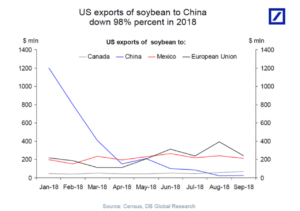When I was born, a women could not take out a mortgage, open a bank account, or manage her investments in her own name. It wasn’t until I was 14 when that right was granted by the Supreme Court. It was not that long ago. It’s really only been within my generation that women have had a full set of rights mirroring those of men.
I started playing with computers when I was in my teens, owning my first one, a TI-99, when I was 17. (I still have it and it still works.) I learned Basic on it. When I went to college, there weren’t any decent computer science programs that interested me, so I got a music degree. When I finished, I sought out the latest computer science degree programs to see if circumstances had changed. They definitely had.
In 1984, microcomputers were all the rage and new degrees were being developed to meet the demand of programming these stand-alone machines. I set my sites (and fulfilled my requirements) to get into one of these programs. When I was ready, I sat down to talk with the director to give him my application.
He refused to take it. He said, “Women just don’t do those sort of things.”
They most certainly do! He was not open to persuasion, so I took a different road. First, I received my degree in journalism. Then, I learned absolutely everything I could about PCs, client-server systems, SQL, system administration, and web languages on my own. Since employers wanted demonstrable skills rather than just degrees, I found myself quite employable.
When I worked the help desk in one company, the other female employees and I discovered that the men spent a short time answering phones and were quickly assigned desk-side technician positions, and then system administration, while we spent years without any promotions. After questioning what was happening, we were told that we were too good with the customers to be moved into a higher position. We all quit wholesale. We later learned that the women in that department were making a third of what the men had made. This took place in the mid-1990s.
Instances of gender bias such as these are the reason why the ratio of women to men in IT is still so very lopsided. Women make up only 20-25% of computing jobs in our major IT companies, with only 18% obtaining computer science degrees. Yet, 74% of girls leaving high school and entering college want to go into IT. The culture is pushing them out. Why would you work in an environment that doesn’t want you there?
I still wanted to work in technology regardless of these experiences. It was just so fascinating. I’d had enough good experiences to understand the potential advancements that could be made in a truly inclusive environment. I pushed on, learned more, and found a better work culture.
Today, I just retired from a 36-year career in IT, mostly working as a technical writer. I’m so glad I stuck with it. The last decade and a half at Avanade have been the very best of times. I wouldn’t trade this experience for the world.
For women trying to break into IT or those already in it, keep pushing to be included. Point out any inequalities you see and work to help other women succeed. For the men in IT, educate yourselves to notice instances of exclusionary behavior. Are women being interrupted when they try to speak? Are their ideas not being acknowledged? Are they being excluded from collaborative sessions or social interactions?
Have you done the statistical data analysis to determine that women really are being paid equally for their contributions? If you do, you may just find the results will shock you.

 Our $14B in annual soybean sales to China has quickly fallen to $0 as of November of 2018. They’re now buying their soy from Brazil. With the Trans-Pacific Partnership agreement going into effect today, our
Our $14B in annual soybean sales to China has quickly fallen to $0 as of November of 2018. They’re now buying their soy from Brazil. With the Trans-Pacific Partnership agreement going into effect today, our 